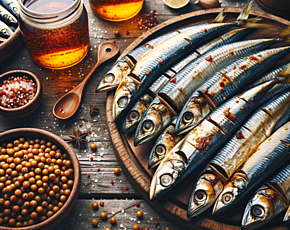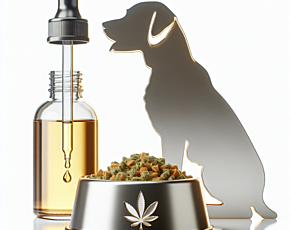Short answer
Haldiram's snacks, while popular for their taste, often come with high levels of calories, saturated fats, sodium, and additives like artificial flavors and preservatives. Consuming these snacks in moderation is crucial to avoid potential health risks such as weight gain, increased blood pressure, and heart disease. Opting for snacks with lower sodium and fat content, serving sizes awareness, and balancing indulgence with nutrient-rich foods and regular physical activity can mitigate these risks. Homemade alternatives, offering control over ingredients and nutritional content, present a healthier option.
Recommended Alternative
Long answer
Nutritional Overview of Popular Haldiram's Snacks
Haldiram's, a renowned brand in the snack industry, offers a variety of products ranging from sweet to savory. While these snacks are beloved for their flavors, understanding their nutritional profiles is key to integrate them healthily into our diets. Below, we delve into the nutritional overview of some popular Haldiram's snacks, focusing on calories, fat content, sodium levels, and the presence of additives or preservatives, which are pivotal in assessing their health impacts.
1. Bhujia Sev: A crispy, spicy snack made from gram flour. A serving of Bhujia Sev typically contains:
- Calories: 150-200 per 30g serving
- Total Fat: 10-12g
- Saturated Fat: 3-4g
- Sodium: 200-250mg
- Potential Additives: Artificial flavors, colorants
2. Aloo Bhujia: This potato-based variant is another crowd-pleaser. Nutritional content per 30g serving is as follows:
- Calories: 160-210
- Total Fat: 11-13g
- Saturated Fat: 3.5-4.5g
- Sodium: 250-300mg
- Potential Additives: Artificial flavors
3. Navratan Mix: A mix of nuts, dried fruits, and spices, offering a unique taste. For a 30g serving, you can expect:
- Calories: 170-220
- Total Fat: 12-14g
- Saturated Fat: 4-5g
- Sodium: 150-200mg
- Potential Additives: Artificial flavors, preservatives
4. Moong Dal: Fried moong lentils, seasoned with salt. Its nutritional value per 30g serving includes:
- Calories: 130-180
- Total Fat: 8-10g
- Saturated Fat: 2-3g
- Sodium: 100-150mg
- No significant additives or preservatives
5. Gulab Jamun: A popular sweet treat, not typically considered for its nutritional value but rather its taste. Per piece (about 40g), it comprises:
- Calories: 120-150
- Total Fat: 5-6g
- Saturated Fat: 2-3g
- Sugars: 15-20g
- Potential Additives: Preservatives to extend shelf life
It's crucial to note that while the sodium and fat content may raise concerns for individuals with certain health conditions such as hypertension or high cholesterol, moderation in consumption can mitigate potential health risks. Additionally, the presence of artificial flavors and preservatives in some products warrants consideration, especially for those monitoring additive intake or with specific dietary restrictions.
Understanding these nutritional details offers a clearer picture of how Haldiram's snacks fit into a balanced diet. As always, incorporating a variety of foods and paying attention to portion sizes are fundamental principles for maintaining dietary wellness.
Hidden Ingredients and Additives in Processed Snacks
When examining the dietary impact of Haldiram's and similar processed snacks, it's essential to highlight the role of hidden ingredients and additives. These additives are often used to enhance flavor, extend shelf life, and improve texture. While they can make food items more appealing, some have raised health concerns.
Key additives found in processed snacks include:
- Artificial colors: Used to make the snacks visually appealing. However, research has shown that certain artificial colors may have adverse health effects. For example, studies have indicated a potential link between artificial food dyes and hyperactivity in children.
- Flavor enhancers: Monosodium glutamate (MSG) is a common flavor enhancer that can lead to symptoms like headaches and nausea in sensitive individuals. MSG is found in various snack items to amplify their umami taste.
- Trans fats: Partially hydrogenated oils, sources of trans fats, have been used in the snack industry due to their solid nature at room temperature and long shelf life. Trans fats are associated with an increased risk of heart disease and stroke.
- Preservatives: Chemicals like sodium benzoate and potassium sorbate are used to prevent spoilage and mold growth. These preservatives are generally considered safe within regulated limits, but concerns have been raised about their potential to form carcinogenic compounds when combined with vitamin C.
Moreover, processed snacks often contain high levels of salt (sodium) and sugar to enhance taste. High consumption of sodium is linked to increased blood pressure, while excessive intake of added sugars is associated with obesity, type 2 diabetes, and heart disease.
It's important for consumers to be aware of these hidden ingredients and make informed decisions based on personal health goals and sensitivities. Reading labels carefully can help in identifying and avoiding potentially harmful additives. Opting for snacks with minimal and recognizable ingredients is another strategy for those seeking healthier dietary choices.
In summary, while Haldiram's and similar products offer convenience and flavor, they may also contain additives and ingredients that can pose health risks if consumed in large quantities or by sensitive individuals. As with any processed food, moderation and a well-informed approach to consumption are key.
Sodium and Trans Fat Content in Haldiram's Products
Investigating the sodium and trans fat content in Haldiram's products is crucial for understanding their potential health impact. Many of Haldiram's snacks, beloved for their savory flavors and convenience, do harbor hidden concerns regarding their sodium and trans fat levels. Let's delve deeper into why monitoring these two components is essential for your health.
Sodium: High sodium intake is linked to increased blood pressure and risk of heart disease and stroke. It's recommended that adults consume no more than 2,300 milligrams of sodium per day, with an ideal limit of 1,500 milligrams for most adults, especially those with hypertension. However, many of Haldiram's products, particularly their chips and namkeens, contain a significant portion of this daily limit in just one serving. For instance, a single serving of Haldiram's Bhujia can contain upwards of 500 milligrams of sodium, which is about a quarter of the recommended daily intake.
Trans Fat: Though trans fats are recognized for their harmful effects on heart health, leading to increased LDL (bad) cholesterol levels and decreased HDL (good) cholesterol levels, they are still found in processed foods. Trans fats are primarily used to extend shelf life and maintain the texture of food. In the context of Haldiram's snacks, while many products have made strides to reduce or eliminate trans fat content, some items may still contain them, albeit in small quantities. The presence of trans fats, even in minimal amounts, is a concern due to their potent adverse effects on cardiovascular health.
It's key for consumers to be vigilant about reading nutrition labels. Look for sodium levels per serving and the presence of trans fats (ideally, you want to consume foods with 0 grams of trans fat). Remember, serving sizes are often smaller than what many people consume in one sitting, potentially leading to unintentional overconsumption of these nutrients.
While Haldiram's products offer the convenience and flavors that many crave, it's essential to consume them in moderation, considering their sodium and trans fat content. Opting for lower sodium versions, if available, and paying close attention to portion sizes can help mitigate some of the health risks associated with these dietary components.
Impact of High-Calorie Snacks on Weight and Health
Understanding the impact of high-calorie snacks, such as those offered by Haldiram's, on weight and health is crucial for making informed dietary choices. These snacks, while delicious and satisfying, can carry significant caloric loads, which, if not balanced within the context of an overall diet, may contribute to weight gain and related health issues.
It's important to dissect how calorie-dense foods, especially snacks that are easy to overconsume, fit into daily nutritional requirements. The principle of energy balance—calories in versus calories out—governs weight management. Consuming high-calorie snacks without adjusting overall intake can disrupt this balance, leading to caloric surplus and weight gain.
Research indicates that frequent consumption of high-calorie, processed snacks can lead to not just weight gain but also adverse health outcomes like type 2 diabetes, heart disease, and metabolic syndrome. A study published in the Journal of Nutrition highlighted the role of processed foods in increasing the risk of obesity due to their high sugar and fat content, as well as low satiety ratings. This suggests that snacks, which often fall under the category of processed foods, should be consumed with caution.
Nutrient density is another factor to consider. High-calorie snacks often lack essential nutrients like fiber, vitamins, and minerals. This can lead to a paradoxical situation where you consume a large number of calories but still fall short of meeting your body's nutritional needs, further complicating weight management and overall health.
However, it's also important to note that not all snacks are created equal. The nutritional profile of each snack should be carefully reviewed. For example, some of Haldiram's snacks may offer more in terms of whole grains, nuts, or legumes, which can be part of a healthy diet if consumed in moderation and as part of a balanced diet. Awareness and portion control are key when including these snacks in your diet.
In conclusion, while high-calorie snacks can be enjoyed occasionally without significantly impacting health, their frequent consumption can disrupt a balanced diet, leading to weight gain and adverse health effects. Making informed choices by reading labels, understanding portion sizes, and balancing intake with physical activity are essential steps in mitigating these risks.
Comparing Haldiram's Snacks to Traditional Homemade Alternatives
When it comes to snacking, the choice between readily available packaged options and traditional homemade alternatives is often influenced by factors such as convenience, taste, nutritional value, and health considerations. Haldiram's, a popular brand known for its wide range of Indian snacks, offers convenience and taste, but how do these snacks stack up against their traditional homemade counterparts in terms of health?
One of the most significant differences between Haldiram's snacks and homemade alternatives lies in the ingredient list. Packaged snacks often contain preservatives, added flavors, and colorants to enhance shelf life and taste. For instance, common additives found in packaged foods include sodium benzoate, monosodium glutamate (MSG), and artificial colors. In contrast, homemade snacks typically rely on fresh, natural ingredients, and the absence of chemical preservatives can lead to a more wholesome snack option.
Nutritional Content Comparison:
| Nutrient | Haldiram's Snacks (Average) | Homemade Alternatives (Average) |
|---|---|---|
| Calories | Higher | Lower |
| Fat | Higher in saturated fats | Lower in saturated fats, option to use heart-healthy oils |
| Sodium | Significantly higher | Lower, adjustable according to taste |
| Added Sugars | Often higher | Lower, easily controlled |
| Fiber | Lower | Higher, depends on ingredients used |
| Preservatives | Common | None |
Another aspect to consider is the cooking method. Many Haldiram's snacks are deep-fried, contributing to their higher fat and calorie content. Homemade snacks give the option to bake, air-fry, or use less oil in cooking, providing flexibility to make healthier choices without sacrificing taste.
Trans fats, which are found in partially hydrogenated oils, are another point of concern in many packaged foods. They have been linked to an increased risk of heart disease. While regulations now require reduced amounts of trans fats in foods, the exact amount in packaged snacks may still vary, and the potential health risks cannot be ignored. Homemade snacks allow for the choice of healthier oils, like olive or canola oil, which are better for heart health.
It's also worth mentioning the psychological satisfaction and nutritional benefits of consuming food made from scratch. Homemade snacks can be tailored to personal health needs and preferences, such as reducing sugar for those with diabetes or opting for gluten-free ingredients. The act of cooking also strengthens one’s connection to food, encouraging mindful eating practices and potentially leading to healthier overall dietary choices.
The comparison between Haldiram's snacks and traditional homemade alternatives highlights the importance of being mindful about the ingredients, nutritional content, and cooking methods used in snacking options. While Haldiram's offers the convenience and taste that many crave, incorporating homemade snacks into one’s diet can lead to healthier choices, providing both nutritional benefits and the satisfaction of eating food that’s lovingly prepared.
Mindful Consumption and Healthier Snack Choices
When it comes to snacking, especially with packaged products like Haldiram's, it’s crucial to adopt a stance of mindful consumption. This involves not just what we eat, but how we eat, ensuring that our choices support a balanced and healthy diet. While Haldiram's offers a wide range of snack options, from savory treats like Bhujia and Namkeen to sweet delights such as Gulab Jamun, understanding their impact on our health requires us to look at their nutritional content and how they fit into our dietary habits.
Firstly, it's important to acknowledge that many of Haldiram's snacks are high in calories, saturated fats, and sodium. Regularly consuming high amounts of these nutrients can lead to various health issues, such as increased blood pressure, weight gain, and an elevated risk of heart diseases. Therefore, moderation is key. Enjoying these snacks as an occasional treat rather than a daily indulgence can help mitigate potential health risks.
To incorporate Haldiram's snacks or any processed snacks into a healthier diet, consider the following tips for mindful consumption:
- Portion Control: Stick to the suggested serving sizes to avoid overeating. Using small bowls or plates can help manage portion sizes effectively.
- Balance with Nutrient-Rich Foods: Pair your snacks with healthy options. For instance, combining a small serving of Haldiram's Namkeen with a mix of nuts and seeds can add nutritional value to your snack time.
- Hydration: Drink plenty of water or opt for herbal teas instead of sugary beverages to accompany your snacks.
- Reading Labels: Always read nutritional labels to be aware of calorie, fat, sugar, and sodium content. This helps in making informed choices.
- Active Lifestyle: Complement your diet with regular physical activity. Exercise plays a vital role in counteracting the negative effects of occasional indulgence in high-calorie snacks.
For those looking for healthier alternatives within the Haldiram's range, you might consider options that are lower in fat and sodium. Brands often offer "light" versions of popular snacks, marked as being baked, not fried, or including "no added MSG." Exploring these can be a worthwhile step towards healthier snacking habits.
In the broader perspective, integrating whole, unprocessed foods like fruits, vegetables, whole grains, and lean proteins into your snacking routine can have benevolent effects on health. Homemade snacks, though more time-consuming to prepare, allow for complete control over ingredients, enabling a healthier diet. Examples include air-popped popcorn without butter, fresh-cut fruit and vegetable sticks, homemade trail mixes, or yogurt parfaits with a sprinkle of nuts and fresh berries.
Adopting a mindful approach to snacking, with attention to both the choice of snack and its portion size, is a step forward in cultivating a more health-conscious lifestyle. By making informed decisions, you can enjoy the rich flavors of traditional snacks like those offered by Haldiram's, without compromising on your health goals.
Frequently asked questions
Are there any Haldiram's snacks that are considered healthy?
Some of Haldiram's snacks may offer a slightly healthier profile, especially those that are lower in sodium and trans fats, or offer a portion of whole grains, nuts, or legumes. Reading labels carefully to choose options with fewer additives and lower calorie content is key.
Can Haldiram's snacks fit into a weight loss diet?
While Haldiram's snacks are high in calories and fats, they can fit into a weight loss diet if consumed in moderation and as part of a balanced calorie-controlled diet. Opting for the smaller serving sizes and complementing them with nutrient-rich foods can minimize their impact on weight.
How can I make packaged snacks like Haldiram's part of a balanced diet?
To make packaged snacks a balanced part of your diet, focus on portion control, pair them with healthy food options for added nutritional value, stay hydrated, be physically active, and opt for versions marketed as lower in fat or sodium.
What should I look for on nutrition labels when choosing Haldiram's snacks?
When selecting Haldiram's snacks, look for information on calorie, saturated and trans fat content, sodium levels, and the presence of additives or preservatives. Opt for snacks with lower sodium and fats and minimal added sugars to make healthier choices.
Possible short-term side effects
- bloating
- increased blood pressure
- headaches (in sensitive individuals to msg)
- nausea (in sensitive individuals to msg)
Possible long-term side effects
- weight gain
- heart disease
- type 2 diabetes
- hypertension
- elevated cholesterol levels
- increased risk of stroke
- metabolic syndrome
Ingredients to be aware of
- artificial flavors
- artificial colors
- sodium benzoate
- potassium sorbate
- monosodium glutamate (msg)
- trans fats
- high sodium levels
- high sugary content
- saturated fats
- preservatives

Benefits
- convenience
- satisfaction of indulgent flavors
- psychological satisfaction with homemade alternatives
- nutritional benefits of healthier homemade or alternative choices
Healthier alternatives
- baked snacks
- homemade snacks with natural ingredients
- air-popped popcorn
- fresh-cut fruit and vegetables
- homemade trail mixes
- yogurt parfaits with nuts and berries
- snacks with whole grains, nuts, or legumes
Our Wellness Pick (what is this?)
Saffron Road Chickpeas
- Organic snack
- Gluten-free
- Non-GMO
- Kosher & Vegan
- Bombay Spice flavor
 Approved by
Approved by 















